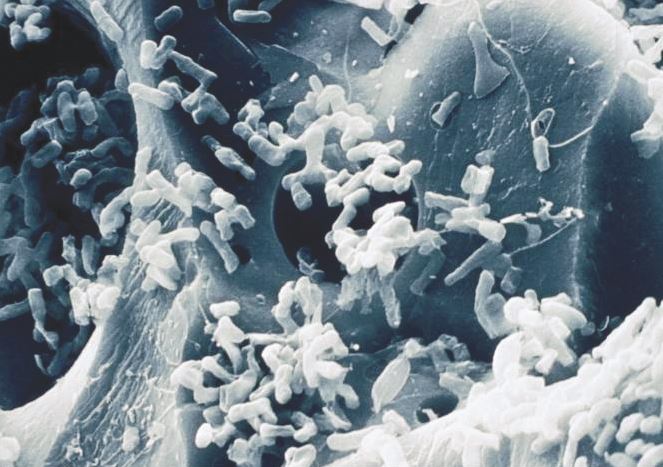

Lesson Eight: Visit to the Local Drinking Water Treatment Facility and/or Having a Representative from the Treatment Facility Visit the Classroom
Grades: 9-12 (Science, Chemistry and Biology) Time: For a guest speaker, 60 minutes; for a visit to the local drinking water treatment facility, two hours Space Requirement: For guest speaker, any classroom Methodology: Group Discussion, Experiential Learning
Objectives: Students will gain a better understanding of the process used to treat the drinking water for their community. Students will speak to, and ask questions of, a professional in the field of water treatment.
Directions/Procedure:
- Between the options of a field trip to a treatment facility or a guest speaker it is likely that the more informative and enjoyable option for the students would be the field trip. This is also the option with the more difficult logistical problems so you will need to choose which would be better for your class, budget (in regards to whether you would need buses to take the students to the treatment facility), adult chaperones available, etc. Remember to ask the water treatment plant operators or the guest speaker to speak to your class well in advance in order to ensure that they will be available to speak to your class on a day when this would be appropriate considering the timeframe of your units. If you choose the option of having a speaker talk to your class, consider having the speaker give a general presentation to the entire school regarding safe drinking water and water treatment in a more general manner the same day that they speak to your class, and then join you and your students in the classroom for a more specific discussion.
- When arranging for a tour or a guest speaker the presenters might like to know what you are expecting them to talk about. Let them know what grade level they will be talking to and how technical it would be appropriate for them to be. They can speak, in general terms, about the process used to treat the local drinking water. Let them know that the students will probably have questions dealing with chlorine, ammonia and iron so they can be prepared to properly address these questions.
- Have the students come up with some questions they would like to ask beforehand. They may want to know about the iron or ammonia concentrations of the raw water entering the facility or the amount of chlorine used. They might also want to ask about which contaminants the facility tests for and how often they do the tests.
- Consider making a thank you card for the speakers that all of your students sign. You may also want to give them a token of your appreciation (for example, a school/school division mug).
- If the class found discerningly low concentrations of chlorine or high concentrations of ammonia in the local sample they should mention this and ask how the treatment facility might be able to remedy the problem.
- Visit the local water treatment plant or have the guest speaker come to the classroom. The students ask their questions and discuss water treatment issues with the speakers.
- Thank the speakers. If your class decided to make a thank you card and/or to give the speakers a token of your class' appreciation then make the presentation at the end of their discussion.
- After the speaker has left or the following day debrief with your students regarding what they learned from the experience.
Evaluation: Students can be evaluated on the basis of good behavior during the visit or trip and participation in the discussion.
Related Links:
Conventional Water Treatment: Coagulation and Filtration Fact Sheet www.safewater.org/fact-sheets-1/2017/1/23/conventional-water-treatment
What is the Purpose of Drinking Water Quality Guidelines/Regulations? Fact Sheet www.safewater.org/fact-sheets-1/2017/1/23/purposeguidelinesregulations
Sign up with your email address to receive news and updates.
We respect your privacy.
Thank you for signing up to receive Safe Drinking Water Foundation email messages!
You will receive a newsletter from Safe Drinking Water Foundation approximately every three months. You will also receive additional email messages from time to time. How you can help us to continue to educate the leaders of today and tomorrow about drinking water quality issues to realize our goal of safe drinking water being available to every Canadian:
Donate to us: https://www.safewater.org/donate , if you donate $20 or more then you will receive an Official Donation Receipt for Income Tax Purposes.
Use the interactive map on our homepage ( https://www.safewater.org/ ) to sponsor a kit for a classroom of students (you can educate 30 students for as little as $85).
Are you an expert in a topic related to water? Volunteer to write, update, or rewrite one of our fact sheets: https://www.safewater.org/fact-sheets .
Send us links to water news you come across and we will post the article on our website ( https://www.safewater.org/news-1 ).
Send us jokes related to water or science for our Funny Friday posts on Facebook.
Send us water facts for our Water Facts of the Week.
Share what you learn about water with others, tell others about Safe Drinking Water Foundation, and encourage others to donate, sign up for our newsletter, and help us to educate leaders of today and tomorrow about drinking water quality issues and solutions.
Please feel free to contact us at any time at [email protected] or 1-306-934-0389 if you have any questions, suggestions, or comments.
Join the discussion in our Facebook Group!
- (657) 231-8220
- 0 FIELD TRIP CART

- Our Board & Public Information
- Our Mission & Vision
- Our Program
- English Language Learners (ELL) Team
- High School
- iLEAD OC Studio
- Personalized Home Study
- Student Support
- Vendor Department
- Our WASC Accreditation
- In the News
- Studio Overview
- OC Studio Team
- Vendor Search Tool
- Current Vendors
- Prospective Vendors
- Learner: Ordering FAQ
- College Webinar Series
- Enrichment, 1-5
- Enrichment, TK/K
- Exploring the Arts
- Field Studies and Service Projects
- Learner University
- Middle & High School Meet Ups
- Academic Calendar
- Assessments
- Family Guidebook
- Complimentary Subscriptions
- Counseling (Student Support)
- Homeless Youth Services
- Mental Health
- Monday Message
- Learner Outcomes
- 7 Habits of Highly Effective People
- Webinars and Workshops
- Charter School Complaint Form
- iLEAD Student Aerospace Projects
- iLEAD Exploration’s DreamUp Launch Team Charlie
- iLEAD’s Commitment To Equity
- COVID-19 Safety Plan and Prevention Program
- Exploration Contacts
- General Inquiries Form
- High School Transcript Requests
- Learner Withdrawal Form
- Record Request Form
- Join Our Team
- Entertainment Work Permits
- Standard Work Permits
- Search submit
Hyperion Water Treatment Plant Field Trip

RECENT POSTS

Upcoming Field Studies Opportunities
Warner Bros. Studio Tour Hollywood, May 16 at 12:30-3:00 PM: Learners five years and up are welcome to come learn and have fun at the Warner Bros. Studio Tour Hollywood….

Learners in grades 7-9 are invited to participate in our overnight Astro Camp experience. Tickets will be released December 1 and learners’ funds must be used. See flyer for details:
Astrocamp is an exciting three-day and two-night program designed for learners in grades 7-9. This outdoor science camp provides: Astronomy and physical science labs Field exercises Team-building activities led by…

Unique and Engaging Environmental Field Trips in Hartselle, Alabama
"Everyone of all ages should go visit these guys. It's really amazing!"
"the organization's passion for children and their families is infectious. it was a brilliant day".
The WaterWorks Center for Environmental Education is the nation’s only water treatment plant reopened as an environmental learning center for kids. Water from nearby Flint Creek is still pumped through the facility. Children get to see firsthand where their water comes from and how it can be treated. The old water treatment cells have been converted to wetlands water treatment cells to illustrate to children how wetlands work to purify water naturally. We want children to not only learn about the natural world, but also to learn about sustainable technologies and practices that can improve our environment. The building now operates entirely off of sustainable energy. Children also get to go canoeing at nearby Flint Creek, where they can learn team-building with their canoe partners and see wildlife firsthand. Keep reading to learn more about our field trip stations.
"This week we sent our son here. I knew he had learned something when he started explaining dragonfly behaviors & identifying bugs by name. Awesome!"
"highly recommend it", book your field trip today.
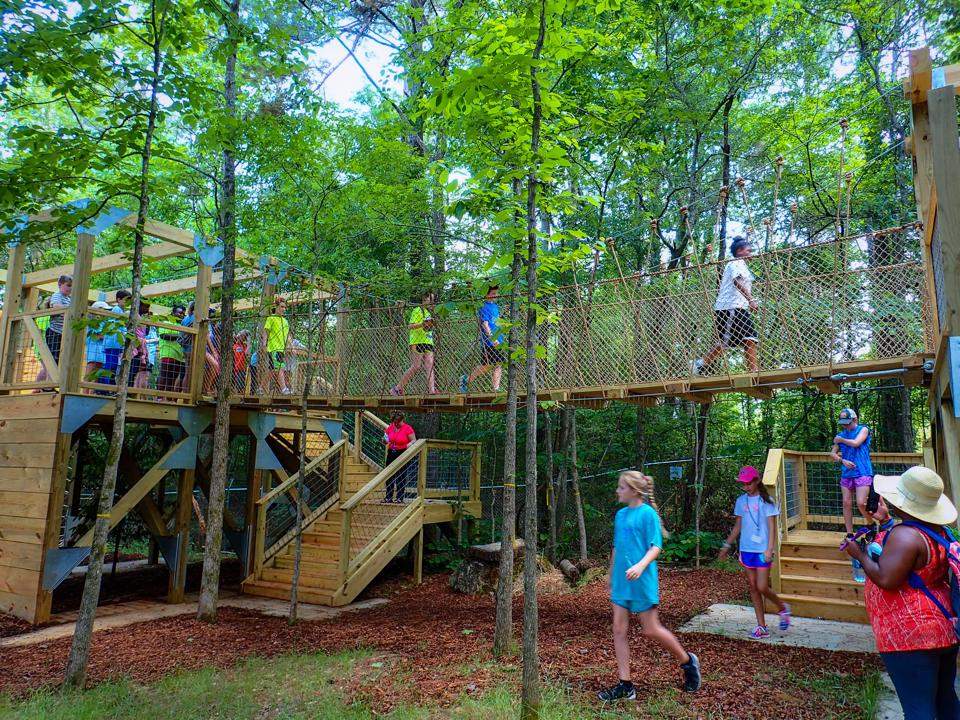
Tree Canopy : Children get to burn off some energy at our tree canopy! Our rope wall challenges kids physically as they ascend to the upper platform where they can get a bird’s eye view of the forest. Children learn about native plants and animals that live in the woods, as well as the importance of trees in climate control, air quality, erosion prevention, and more!

Canoeing : Many kids who visit us have never canoed before. Seeing the look of accomplishment and joy on their face as they learn how to navigate their canoe across the water is priceless. After a tour packed with information about sustainability and the environment, they have the opportunity to learn a new skill that they will remember for the rest of their lives!
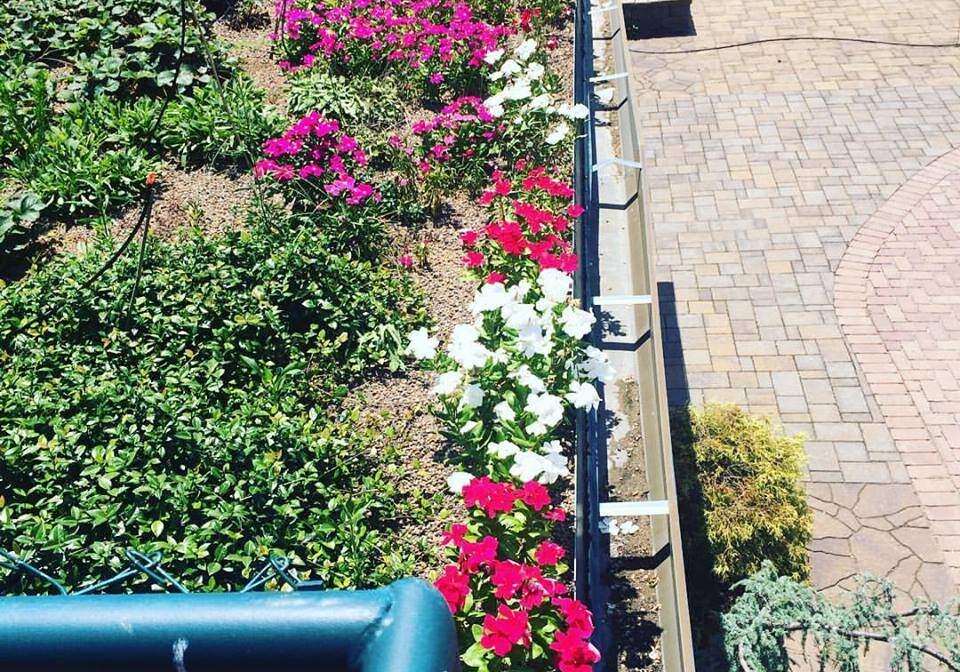
Green Roof : Our green roofs provide excellent insulation for our building, reducing electricity needs, in addition to providing extra growing space for beautiful flowers and delicious strawberries. Kids can say they have tasted strawberries grown on a roof!
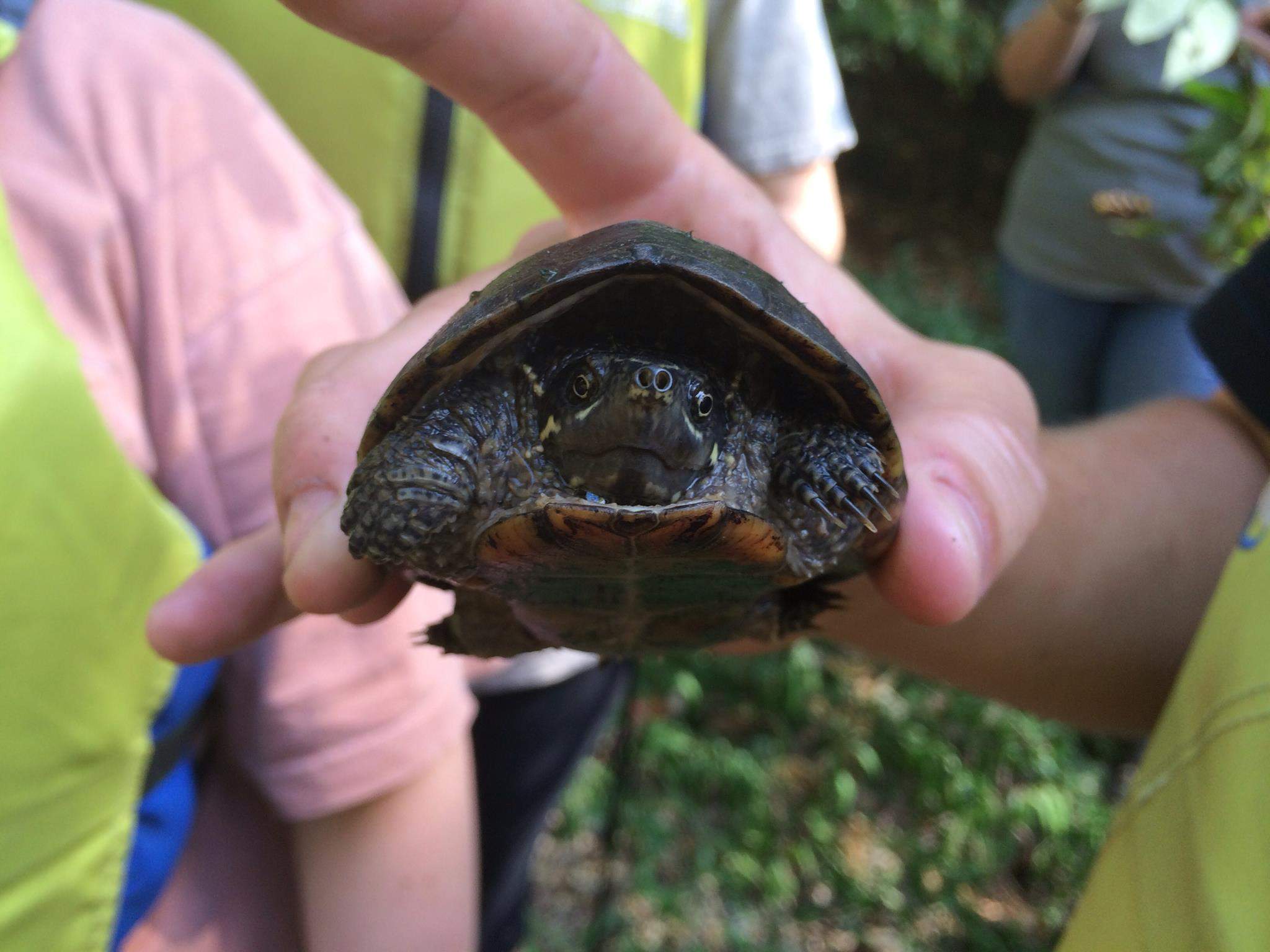
Turtle Exhibit : Have you ever seen a snapping turtle up close? What kinds of habitats do different turtles prefer? What types of turtles are native to the Southeastern United States? Children can learn the answers to these questions and many more at our interactive turtle exhibit!
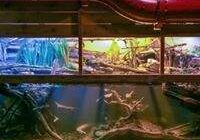
Freshwater Aquariums : Our freshwater aquariums are designed to mimic local streams and creeks. Children can get a different perspective of what our creeks look like under the water, and what local and native species call them home.
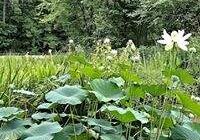
Wetland Cell Water Treatment : When the water treatment plant was operational, it housed several water treatments cells, or containers, that treated and stored water at different stages during the treatment process. Now, those cells have been converted to wetlands to illustrate to children how wetlands purify water naturally and recycle nutrients
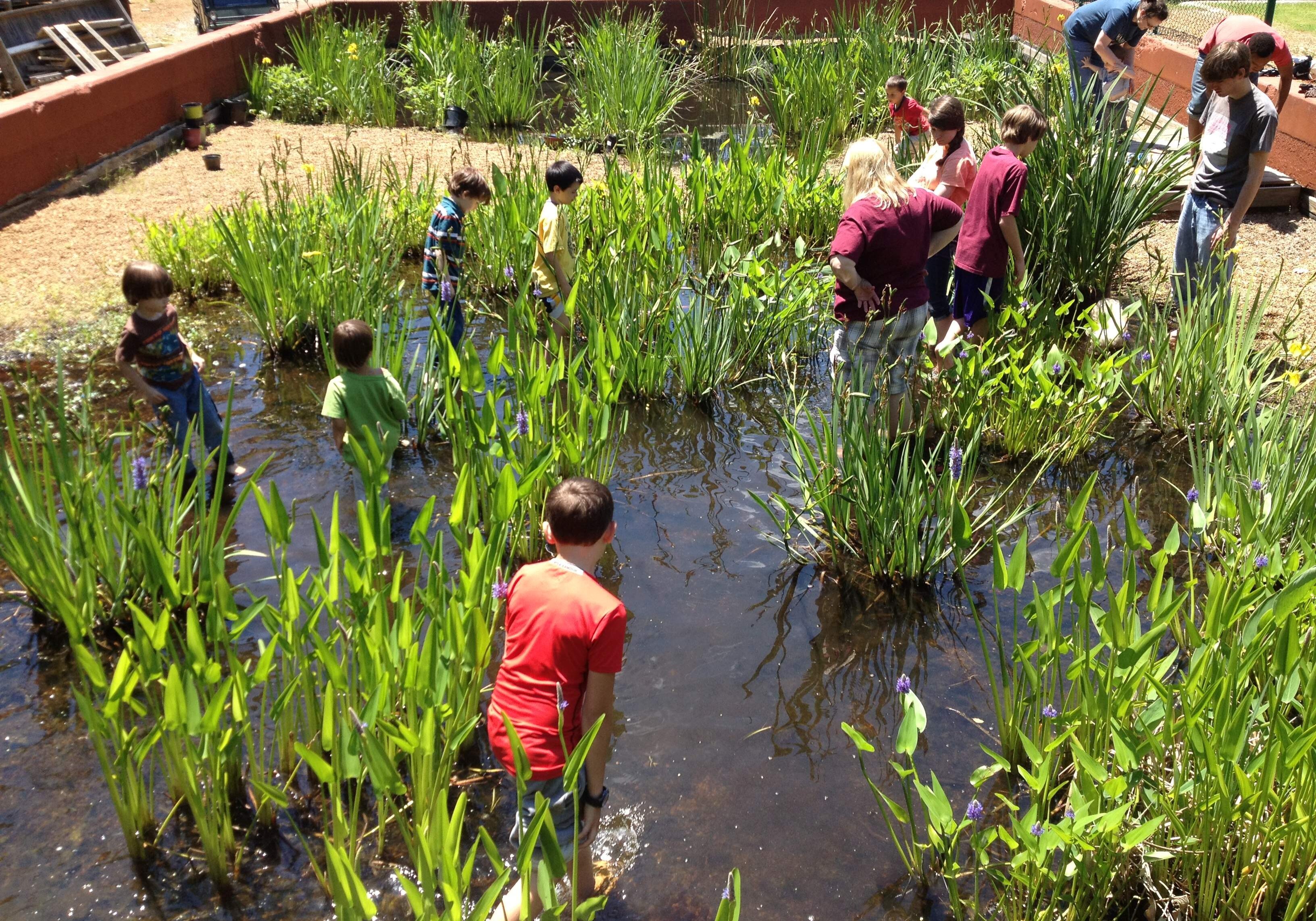
Interactive Wetlands Cells : We converted old water treatment storage cells into interactive wetland cells where kids can learn about the importance of wetlands while they search more creatures like crayfish, salamanders, tadpoles, dragonflies, and more! Hunting for critters has never been so fun AND educational!
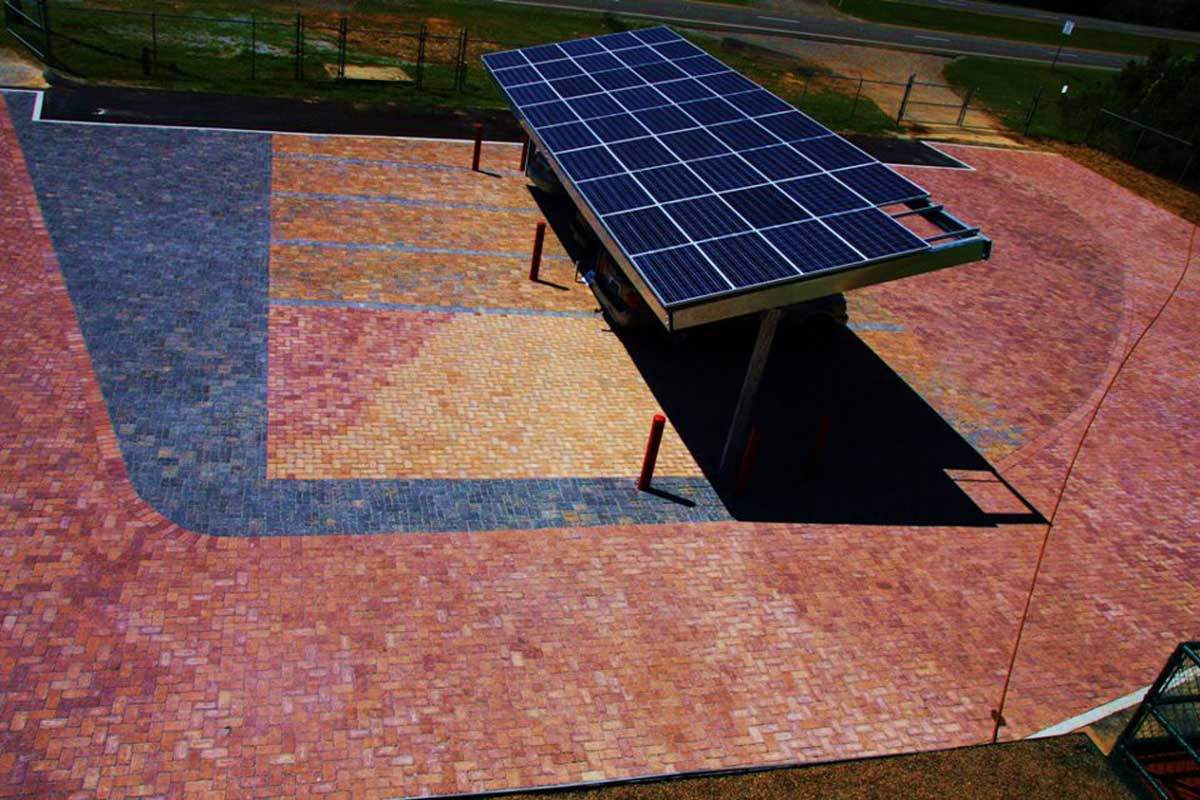
Powered by Solar Energy : Children learn about solar powered energy and how solar panels can reduce the need for fossil fuels which can harm the environment. Older kids can be introduced to the idea of carbon credits, which can yield monetary profits for the owners of solar.
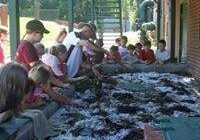
Vermiculture (AKA Worm Composting!) : We compost our office paper waste. Worms can greatly speed up the composting process and break down nutrients so they are more easily added to soil. Kids can learn about the environmental benefits of compost and the role of nature in degrading materials to recycle naturally.
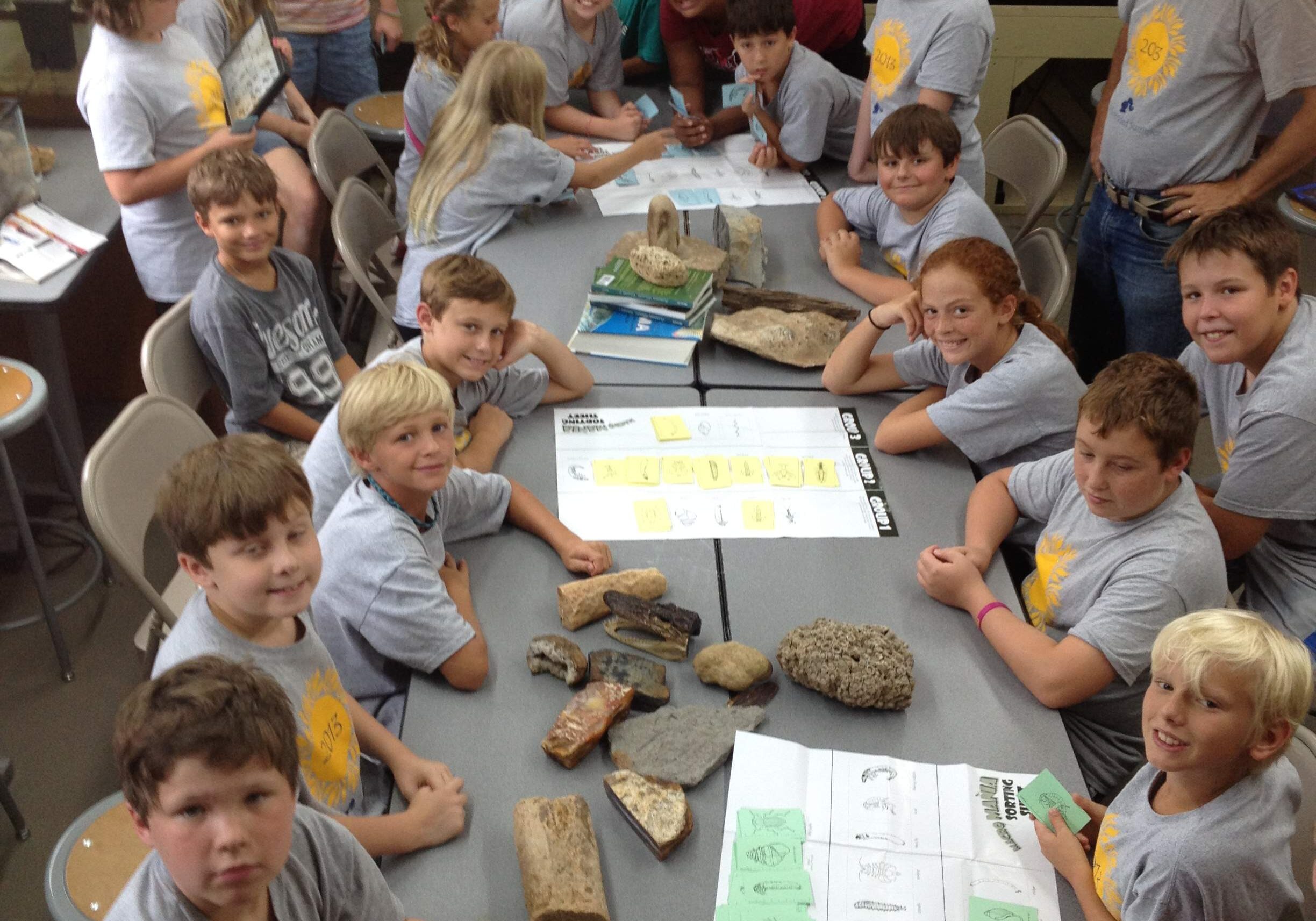
Classroom : Students have the chance sit down and look at fossils, marine invertebrates, microscopic water life and other educational activities in our more traditional classroom at WaterWorks.
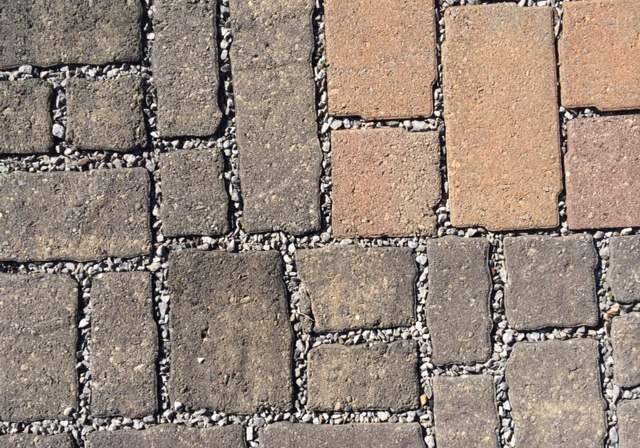
Porous Pavers : Our parking lot is full of porous pavers that prevent harmful stormwater runoff from entering streams by allowing water to soak into the soil underneath the parking lot, instead of just flowing over the surface. Kids learn about how stormwater runoff affects local streams and marine life.
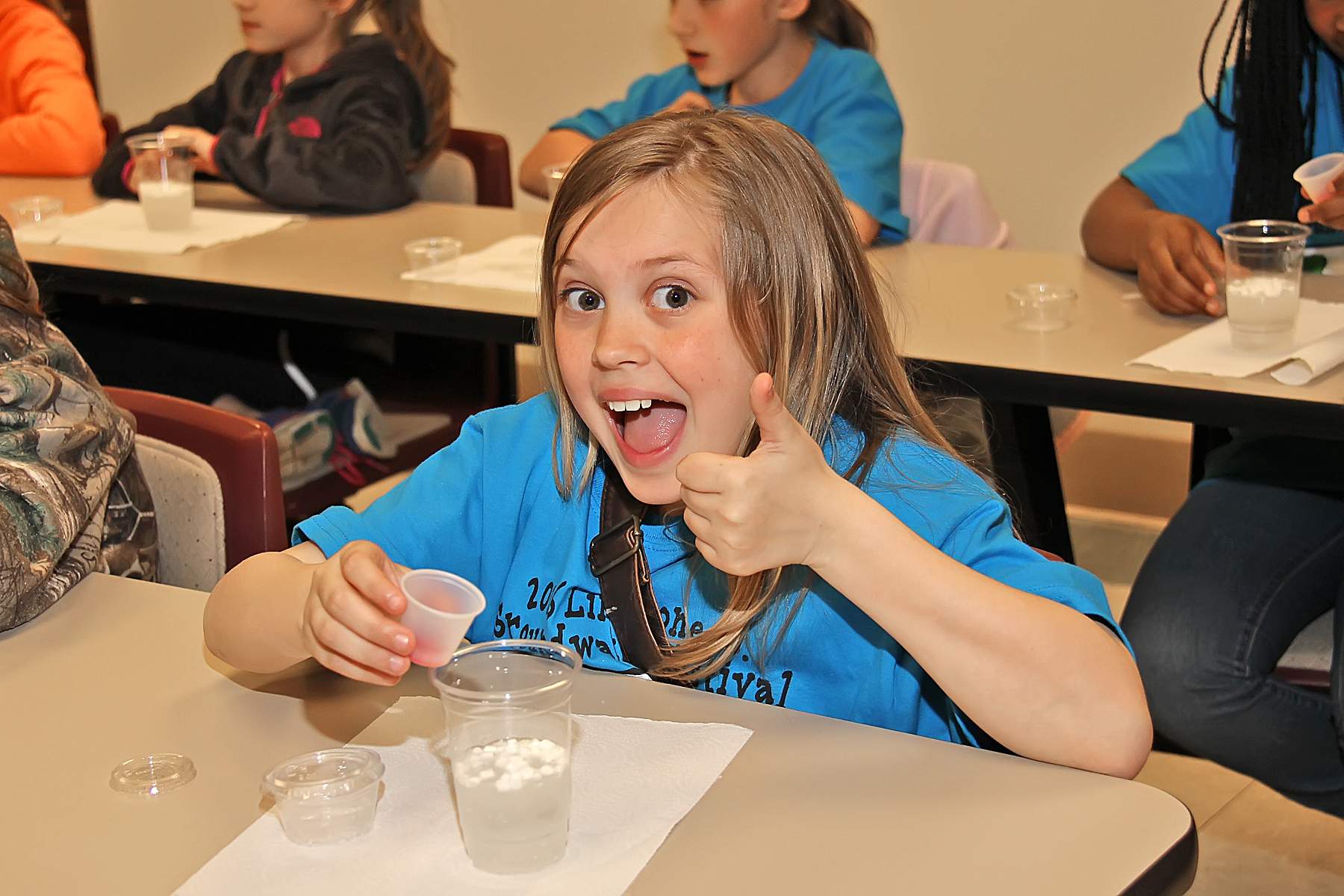
The best kind of learning happens when learning is fun. Book a field trip now!
Academia.edu no longer supports Internet Explorer.
To browse Academia.edu and the wider internet faster and more securely, please take a few seconds to upgrade your browser .
Enter the email address you signed up with and we'll email you a reset link.
- We're Hiring!
- Help Center

A Report " Water treatment plant visit " Civil Engineering Department Co-ordinator

Related Papers
Sagar Divetiya
asif khan , Sakib Amin
Bangladesh was well known as the largest producer and exporter of jute since the 17th century. However, the country is now known as one of the leading exporters of ready-made garments in the world. The country and its people have shown dramatic progress and have expressed it to the world that, the country is well underway in achieving the title of a middle income country in mere future. The textile and garments industry holds up to 81.71% of the total exports and has created almost 4 million workers in the country. The success of the textile and garments industry has brought forward many entrepreneurs in setting up their own businesses and be a part of this fruitful industry. These new companies in comparison to the old ones emerged in a drastic and unplanned fashion. They resulted in employment for the people, but most of these ambitious and motivated business people have been careless in learning the fact that the nature is one of the most valuable assets for Bangladesh. The factories are involved in rigorous activities for preparation of products for the foreign buyers and the effluents generated as a by-product, containing various harmful chemicals and suspended solids are released to these rivers every day. Thus, this paper tries to bring forward the benefits that the textile and garments industry would attain through proper operations of the Effluent Treatment Plant (ETP). The textile and garments industry in Bangladesh still lacks in proper knowledge on choosing the correct ETP and how to routinely operate them. This study tries to investigate the importance of ETP on textile and garments industry in Bangladesh economy by providing some basic knowledge on ETP. This study also focuses on the various initiatives and practices adopted by different textile and garments companies in efficiently operating the ETPs. There are detailed discussions on how managing and monitoring the different operation units would result in cost reduction and help the industry in routinely running the ETP. It is crucial for the textile and garments industry to understand that, immediate awareness needs to be raised on using the already existing ETPs by companies. There are so far no studies done on increasing the awareness of efficiently using the already existing ETPs in the industry. Thus, this study tries to encourage the companies by sharing some of the initiatives and practices which are feasible for companies to adopt and consider the ETP as an integral part of its operation. It is significant for the industry to understand that operating the ETP on routine basis not only reduces the damage done to the environment, but also results in reduction of costs for the industry and prove beneficial in various ways for the industry and the country as a whole. A major benefit of efficiently operating the ETP is in the form of gaining acknowledgement from the foreign buyers and thus resulting in increasing exports of garments to the foreign market.
Hareesh R P
Md. Mahmudul Hasan 102-23-2042
FUNCTIONS OF BIOLOGICAL ETP.
Eoghan Clifford
Ravi Shankar Shankar
Toe Environmental Protection Agency was established in 1993 to license, regulate and control activities for the purposes of environmental protection. In Section 60 of the Environmental Protection Agency Act, 1992, it is stated that "the Agency may, and shall if so directed by the Minister, specify and publisñ criteria and procedures, which in the opinion of the Agency are reasonable and desirable for the purposes of environmental protection, in relation to the management, maintenance, supervision, operation or use of ali or specified classes ofplant, sewers or drainage pipes vested in or controlled or used by a sanitary authority for the ..... treatment or disposal of any sewage or other effluent to any waters ". Criteria and procedures in relation to the treatment and disposal of sewage are being published by the Agency in a number of manuals under the general heading: 'Waste Water Treatment Manuals'. Where criteria and procedures are published by the Agency, a sanitary authority shall, in the performance of its functions, have regard to them. This manual on Primary, Secondary and Tertiary Treatment sets out the general principies and practices which should be followed by those involved in the treatment of urban waste water. It provides criteria and procedures for the · proper managernent, maintenance, supervision, operation and use of the processes and equipment required for the secondary treatment of wastewater. Toe Agency hopes that it will provide practica) guidance to those involved in plant operation, use, managernent, maintenance and supervision. Where reference in the document is made to proprietary equipment, this is intended as indicating equipment type and is not to be interpreted as endorsing or excluding any particular manufacturer or system. The Agency welcomes any suggestions which users of the manual wish to make. These should be retumed to the Environmental Management and Planning Division at the Agency headquarters on the enclosed User Comrnent Form.
Geneva Travis
One potential solution to address this water shortage is reducing demand through recycling water. Decentralized wastewater treatment can provide high quality,recycled water on site, but these technologies are scarce in Santa Barbara County dueto a lack of familiarity. We partnered with The Sustainability Project, a Santa Barbara based non-profit, to develop a decision support tool for architects and builders tolearn about and compare systems, and to assist them in identifying appropriate wastewater treatment systems for their projects. We then applied our tool to a project for Peikert Group Architects that faced strict wastewater restrictions. Additionally, we analyzed the life cycle global warming impacts of centralized and decentralized systems, including sewage collection, to comprehensively evaluate their impacts.Lastly, we created a decentralized wastewater treatment permitting flowchart to guide stakeholders through the complex regulatory process. Our project provides a thorough analysis of the strengths and weaknesses of various decentralized wastewater systems from an environmental, economic, and social perspective. Our analysis shows that there is no perfect technology since trade-offs exist between different criteria, and that obtaining a permit for advanced decentralized wastewater treatment systems is difficult. Information is presented in an accessible manner to stakeholders, preparing them to meet the sustainable design challenges of the future.
Ashaduzzaman Himel , Md Shipan Mia
Effluent Treatment Plant (ETP) is one of the most important & prominent part of Textile dyeing sector. The discharged water is properly treated in the ETP plant to ensure that the discharged waste water is not harmful for nature. If the ETP is performed properly in the industry it ensures the smooth & ethical production operation of the manufacturing units. The ETP unit of some of Bangladeshi dyeing textile unit is taken into consideration for this research. After taking the raw water directly discharged from industry is taken for the parameter checking. Analyzing the acquired result it is clear that if the management of the dyeing unit becomes loyal to the environment with ethics & operate the ETP properly than most of the dyeing industry would perform best with ISO standard. The common measurement & procedures available in the dyeing factory is used to measure the characteristic of discharged waste water.
RELATED PAPERS
abbott Ejeba
OSORIO CHAVEZ DIEGO FERNANDO
Aiman Hamam
Environment, Development and Sustainability
Rita Dhodapkar
shubham patil
Raghav Sharma
Eromosele Imonitie
Rajendra Thakur
Obisanya Adekunle
Farid Samsudin
Anand Tripathi
million debele
Arash Ostovar
Ramon Rodriguez
vidya sagar
International Journal of Scientific Research in Science, Engineering and Technology IJSRSET
Javier Guardiola Esparza
Thaquwa Nabriskhan
Flotation Technology
Hermann Hahn
Masna Rai , Nisha Bhattarai
Wastewater Engineering Treatment 5th Edition Solutions Manual
roshan varde
Nizeyimana Celestin
Dr. Rajender Rohella
Yusuf özdemir
Sheyla Chávez Zepeda
krishna yadav
International Journal of Engineering and Advanced Research Technology IJEART
Saber Ebaid
PRABHAKAR PATIL
Babudhan Singh
Reynaldo Jauregui
International Journal of Engineering Sciences & Research Technology
Ijesrt Journal
Thang Nam Pham
Osada Vishvajith Peiris , Nazifa Zabeen , Supriyanto Supriyanto , Prerna Shah
Nguyen Linh
IOSR Journals
- We're Hiring!
- Help Center
- Find new research papers in:
- Health Sciences
- Earth Sciences
- Cognitive Science
- Mathematics
- Computer Science
- Academia ©2024

Expedition Water by Design Virtual Field Trip: Wastewater Treatment Plant
The Resource
Other resources, you might like.

Resources for Teachers
South Platte Renew supports Pre-K-12 educators with information and resources about the water renewal process that complement the classroom curriculum. We offer free interactive classroom presentations and virtual tours, as well as educational materials. We offer free field trips to experience the facility, to see our process of renewing water and recovering vital resources from the flow that enters the plant daily.
Do you have an idea for a service project? We can support that too!
Contact our Education and Outreach Specialist for more information on our educational opportunities.
PLEASE NOTE: Due to current health concerns regarding the COVID-19 Pandemic, we are not going into the classroom. If you are interested in having a virtual classroom visit or a tour of our facility through Microsoft Teams or Zoom, please contact our Education and Outreach Specialist to schedule. We also check out activity kits for teachers to use with their classroom in a socially distancing environment. Thank you for your understanding and your continued interest.
Field Trips / Tours
We offer free educational field trips for school groups interested in learning more about the water renewal process. Tours can vary from 30 minutes to three hours depending on the tour type. Typical school group tours are 1 hour and 30 minutes. The fieldtrip includes a presentation/video and walking tour of the plant. Participants are required to wear closed toed shoes. Water testing and visits to the South Platte River can be provided upon request for high school student groups. We can accommodate 1 – 25 participants per group.
Register your students for a field trip
Classroom Presentations/ Kits to borrow for your classroom
Schedule a thirty minute or one hour presentation for your classroom, homeschooling group, or scouting troop and let us bring the learning to you. Classroom teachers may also check out the kits to use in their classroom as an enrichment activity to lessons.
**NOTE: Due to COVID-19 concerns, many kits have been adapted to individual student use and can be checked out to the classrooms, then returned for disifection and restocking. Others, have the ability to accomodate social distancing practices.
Please let us know how we may assist you in equipping your students and classrooms?
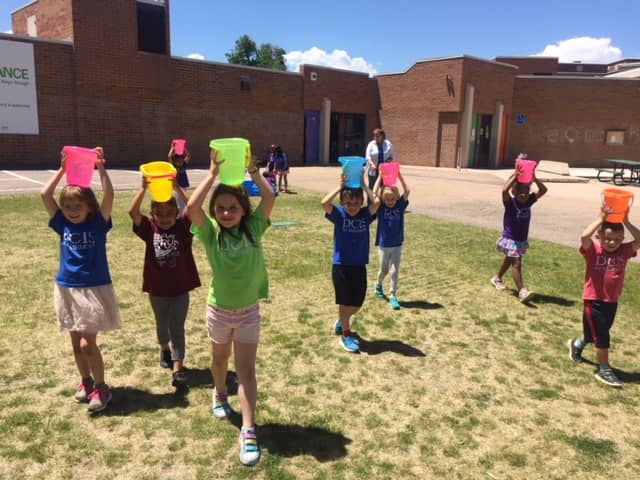
**The Long Haul
Have you ever wondered how people get water to their house when there is not a faucet in the kitchen or bathroom? If you lived in a remote village, how would you get your water? In small villages, children, and sometimes adults go to the public water source (river, stream or lake) and haul water every day for the family to use for cooking, cleaning and drinking. Through this interactive lesson kids (K – 4) can experience hauling the water for their families. The activity can be adapted for any age to include longer treks and added obstacles.
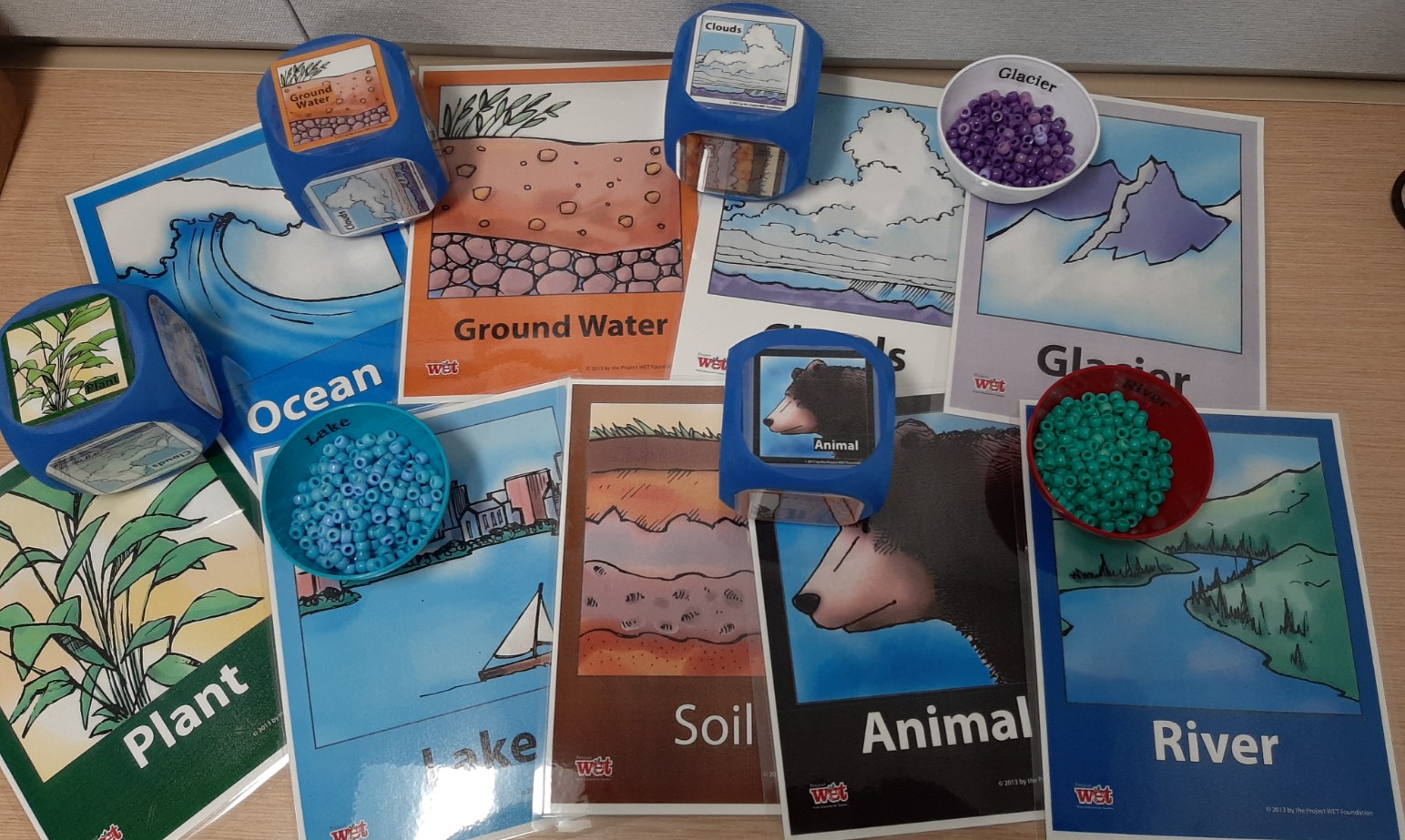
**The Incredible Journey: A Water Cycle Game
Have you ever wondered what it would be like to be a drop of water? What would your life be like out in nature? One day you might be sipped up by a thirsty bear, then left behind for to water a plant, evaporated into the clouds, then precipitated down as snow to become part of a glacier. In the fast paced activity students will moved from each location collecting beads to build their story. The student then will share their story through creative storytelling to explain the journey that they took as a water drop. This activity can be adapted for grades 2 – 6.
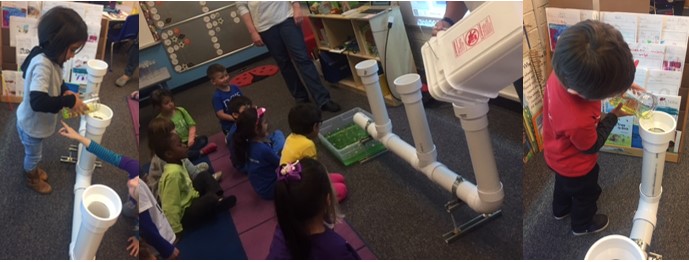
**Ancient Toilets
How did the Romans do their business? What did they use for toilet paper? Through interactive play we show the kids (K-4) how the Roman toilets worked and explain that thanks to the engineering of these toilets, we have advanced to flushing toilets that we have in our homes. The activity can be adapted for any age by altering the process results and adding a short discussion on cleaning wastewater.
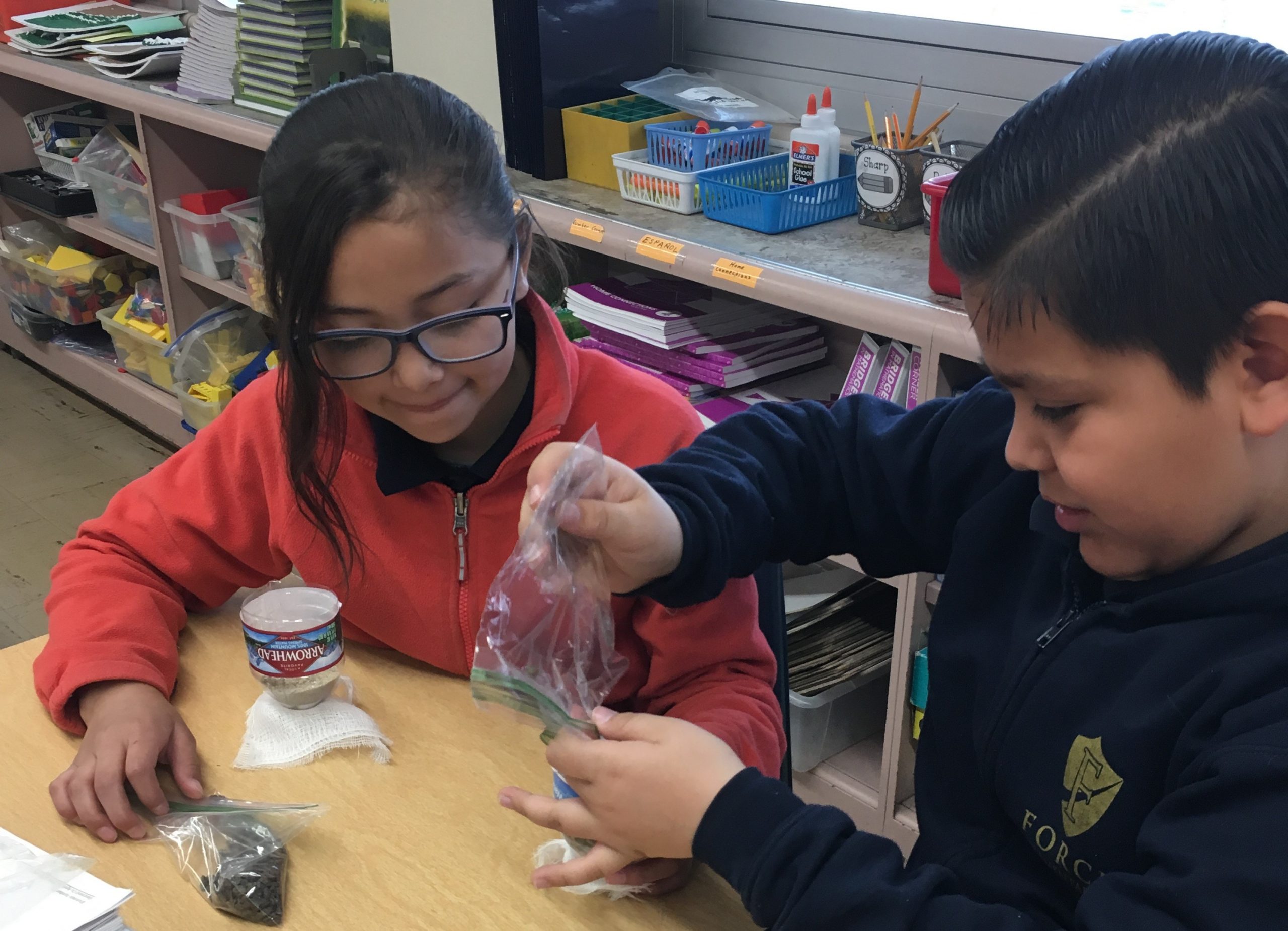
**Building Water Filters
This hands-on activity allows students to build a basic water filter by repurposing a plastic bottle. By simply adding cheesecloth, sand, gravel (and charcoal for grades 4 – 6) and a rubberband, students build a filter for dirty water. We will discuss the importance of cleaning water and the processes used at the Water Renewal Facility. We will talk about the different type of filters used and have some fun with experimentation. This activity can be adapted for grades K-6.
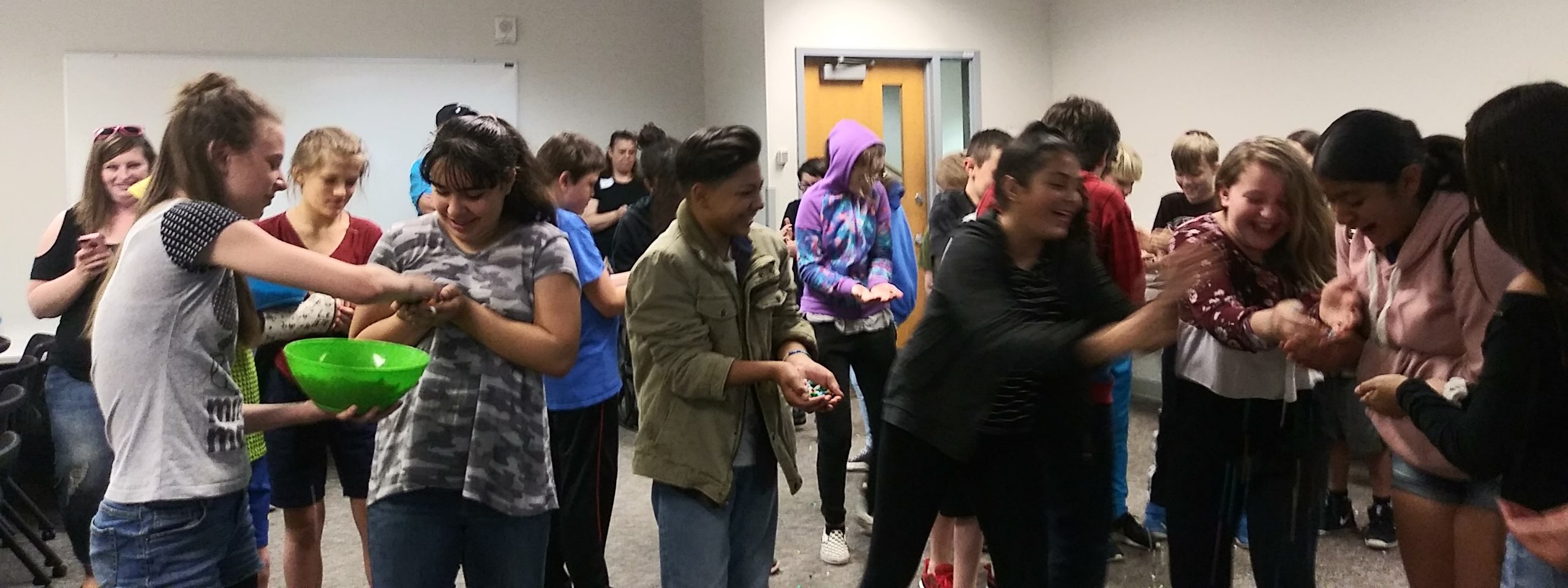
We Are The Watershed
What is a watershed? Learn about head waters, tributaries, estuaries and how they all are important to our many watersheds. How do seasons and weather affect the flow in the watershed? Through this fast paced activity, students will “act out” the flow during storms/droughts and seasons to show the differences, then discuss how this impacts conservation and water usage. We also discuss the value of conservation even in wetter years. This is an activity that can be adapted for grades 2 – 5, or even older students as an icebreaker in conjunction with a presentation.
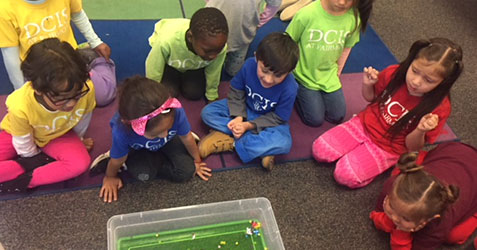
**Who Polluted the South Platte River?
Have you ever thought what your personal impact is on the river? Through this interactive lesson we will have the kids help us pollute the river by taking on the role of different contributors. They may be an animal, business owner or a citizen recreating. Many other options are available. This activity will enlighten students (K – 5) of their impact on our river, and how to be a better stewards through collaborative care of our environment.
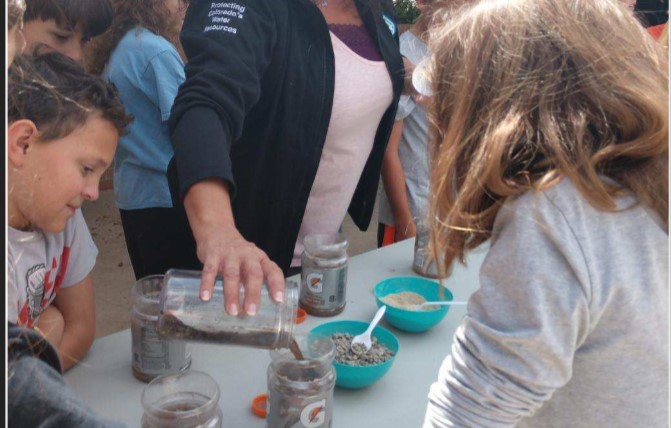

More kits to come
If you know of an activity or theme that you would like to see, please contact our Education and Outreach Specialist to discuss possibilities of creating the activity.
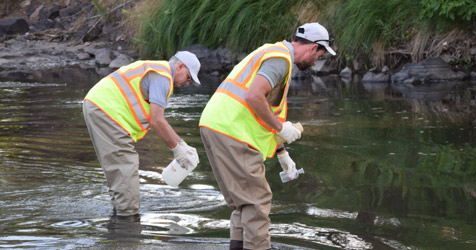
River/Waterway Sampling
Is your school near a safe to access water source? River, stream, creek, pond, other? Through water sampling, students (grades 3 – 5) learn about Temperature, Dissolved Oxygen, Turbidity and Ph of the water around them. We discuss how climate and human factors can impact the results. Also, students will brainstorm and discuss the effects of these results on the animal and plant life.
Likewise, if the students are in high school, we can come to a water source near your school, or you can visit us at the South Platte for river sampling. We will complete the same tests of the water to determine Temperature, Dissolved Oxygen, Turbidity and pH. Included in this experience, we will attempt to capture and identify a variety of macroinvertebrates.
Education Materials

Worksheets/Activity Sheets
We provide a variety of worksheets for students, to add to the classroom, homeschooling, remote learning and just for fun! More added regularly.
- Water Math Addition (early elementary)
- Water Math Subtraction (early elementary)
- Water Math Multiplication (mid elementary)
- Words on Water wordsearch (elementary, middle school)
- Renewal Process wordsearch (middle school, high school)
- What goes where (elementary, middle school)
- Water Word Scramble for Upper Elementary (upper elementary)
- Water Word Scramble for Early Elementary (early elementary)
- Water Renewal Crossword Puzzle (upper elementary, middle school)
- SPR Virtual Tour Worksheet (middle school, high school)
- SPR Website Water Cycle Video Worksheet (upper elementary, middle school)
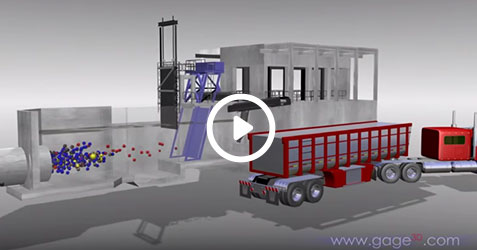
Virtual Plant Tour
Let us bring the Plant to you! We have a PowerPoint presentation of the entire process from influent to effluent. This tour will allow students of all ages to experience the entire Plant without leaving the classroom. We will discuss each stage of the process and answer questions as we go along. By doing the virtual tour, it allows the students to see inside buildings that we are not able to share during a walking tour, for safety reasons. With our virtual tours, we bring samples from the stages of the process, so the students can see how the wastewater is cleaned and the vital resources are recovered.
Additional Links
Forests to faucets teacher resources, project wet, epa office of water, epa environmental education, epa environmental kids club, usgs water science school, usgs the water cycle, water environment federation students and teachers k-12, h2ouse water saver home, colorado state university water knowledge, water for people.

Community Events
South Platte Renew hosts several major community events annually, where community members are invited to visit our facility and learn about the water renewal process. We also partner with the Cities of Englewood and Littleton at their events to educate the community on the water renewal process.
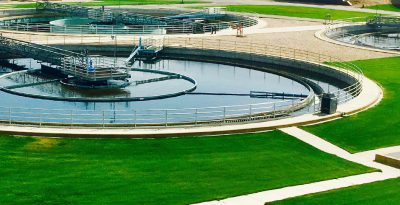
Water Renewal Process
At South Platte Renew we use a biological treatment process that harnesses the natural power of native bacteria to sustainably clean and renew water using the least amount of chemicals and energy.

Updates and News
Get updates and information about South Platte Renew. Learn about the challenges affecting the water renewal process, how we are taking water knowledge into the community and the classroom and how you can be a steward of the South Platte River.
Signup for News & Updates from South Platte Renew
Get tips on water conservation and stay up to date on the latest updates.
- Email Address *
Pittsburgh Water and Sewer Authority

What can we help you find?
Tour our water treatment plant.
We are providing a private, pre-scheduled tours of the Water Treatment Plan at this time. To inquire about tours, please contact us .
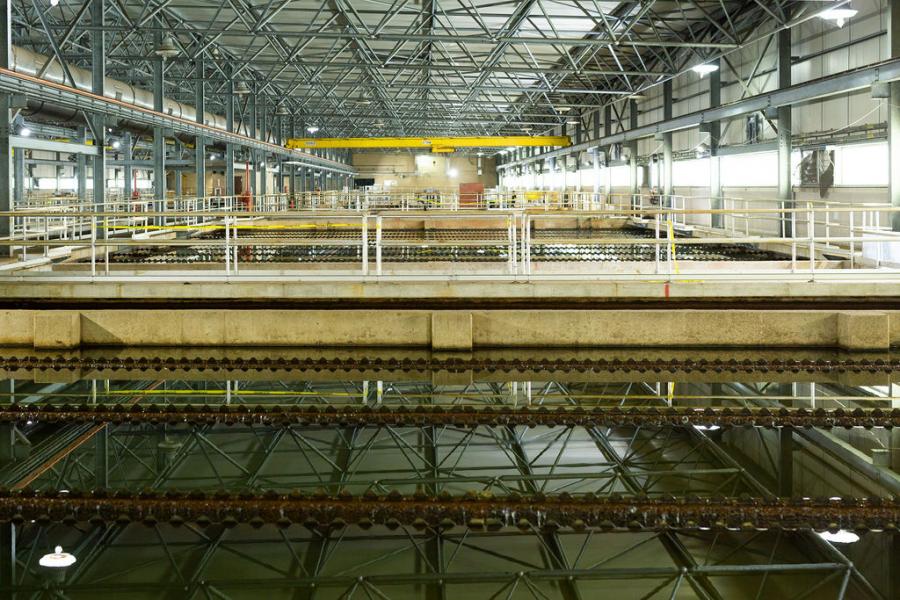
Touring the Aspinwall Water Treatment Plant is a unique experience for a school field trip, a research project, or an educational outing. You will learn about the source of your drinking water, the treatment process, and how it's distributed to taps throughout Pittsburgh.
What to Know
- Tours are available on Tuesdays, Wednesdays, and Thursdays between 8:00 AM and 12:00 PM
- Visitors must be at least 14 years old
- Visitors (or their legal guardian) must sign a waiver before the tour
- Those touring the Water Treatment Plant must wear sturdy, close-toed shoes
- Since the walking tour is mostly outside, dress appropriately for the weather (winter coat, raincoat, sunscreen, sunglasses, etc.)
- Tours are given rain or shine, unless severe weather occurs
- Attendees will walk over one mile (on flat ground) and climb several sets of stairs during the tour
- Maximum group size for a tour: 15.
Aspinwall Water Treatment Plant 900 Freeport Road* Pittsburgh, PA 15238 *make sure not to confuse with Freeport Rd. Brackenridge, PA 15104 Treatment Plant is across from Waterworks Plaza in Aspinwall.
Tour Guidelines and Waiver
- Water Treatment Plant Tour Guidelines and Requirements
- Water Treatment Plant Tour Waiver
Water Treatment Plant Tour Request Form
Status message.
- Bahasa Indonesia
- Slovenščina
- Science & Tech
- Russian Kitchen
Russia’s battle with water pollution continues
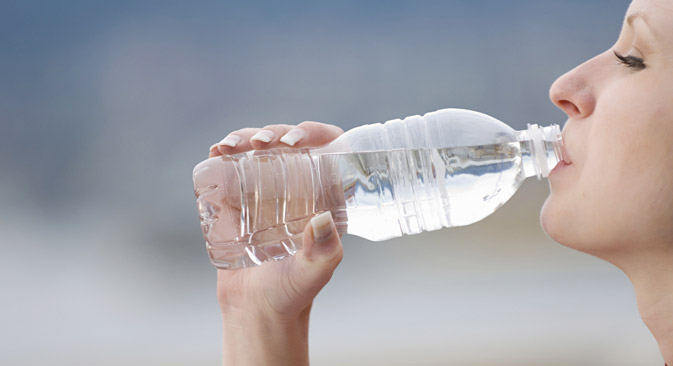
Source: Getty Images/Fotobank
Every third sample from sources of drinking water in Russia fails to meet acceptable standards due to chemical contamination, according to Russian consumer watchdog agency Rospotrebnadzor. Moreover, nearly half of Russia’s population lacks safe drinking water. As recently reported by Greenpeace, water pollution is widespread: “Thousands of companies have dumped dangerous chemicals into rivers and lakes, and these pollutants are inevitably absorbed into the human body through water and food.” According to Greenpeace, “Companies are not adopting clean technologies, and the government is ineffectual when it comes to preventing criminals from poisoning the water.”
At the same time, in recent years the number of companies in Russia that offer unique technologies for purifying water, including water with radioactive contamination, is increasing. In late August, RosRAO, a subsidiary of Rosatom, qualified to participate in research to determine the technologies that will be the most effective in purifying the polluted water from the Fukushima-1 nuclear power plant. The Japanese government will invest more than $9.5 million in this research.
Private companies offer new solutions
More and more, small companies are offering innovative new solutions for water purification. Recently, a team of former equipment suppliers to Gazprom, Russia’s largest energy company, implemented a new solution developed by the Novosibirsk Institute of Mining. The result is Aquifer, a complex water purification system.
The Novosibirsk Institute’s new technology is an ejector-dispersant that stirs the water intensively, saturating it with oxygen. The system has no mechanical moving parts, and as a consequence will save a significant amount of energy. Moreover, it will reduce the amount of hypochlorite needed to oxidize iron and other impurities. Aquifer will oxidize all light impurities with air and kill bacteria through electrolysis. Earlier, as a rule, similar technology was used in large-scale water treatment systems. The Aquifer system is unique in that it can be used by smaller companies that consume 20-50 cubic meters of water per day.
Making water safe to drink
The Aquifer idea came to Pyotr Mikheev at the beginning of the 2000s, when he and two of his partners were supplying water treatment equipment to Gazprom camp sites. “We got together $100,000 in personal funds to launch assembly plants,” Mikheev said.
In order to make water potable, there are several classic methods: chlorination, ozonation, UV treatment, ultrafiltration, and electrolysis. Unfortunately, chlorine is dangerous to store, transport, and use because it is a poisonous substance.
Since the end of the 20 th century, ultraviolet light and ozone have been used in purification. But ozone is poisonous, and ultraviolet light purifies water only near the source. Already within a meter and a half, nothing of this effect is left in the water flow. Therefore, when using this method, a chlorination installation has to be added to the purification cycle. Ultraviolet lamps are longitudinally complex, and the surfaces require constant cleaning. Electrolysis is still the safest and most effective method of disinfecting.
Technical details
There is another technological subtlety used in the system. The developers combined electrolysis with dispersion (stirring water) and dramatically increased the efficiency with which impurities are oxidized. This is important, because water from underground sources is usually almost free of bacteria but contains a significant amount of iron and other impurities that must be oxidized.
Usually in large water treatment plants, this is done with the help of oxygenation or by a catalyst, oxidizing iron. But these methods have disadvantages: catalyst loading is expensive and requires constant replenishment, while oxygen saturation requires an electric compressor to be constantly running. This makes for high energy costs. But then came the convenient solution invented by the Novosibirsk Institute of Mining.
The Aquifer is installed in modules, or “cubes,” depending on the composition of the water and the purification requirements. If, for example, desalination is necessary, it is added at the corresponding stage. If the water is underground, the decontamination unit is removed, or the deferrization module if the water is on the surface. The technology can be used not only for potable water supply systems, but for treating domestic and industrial wastewater and swimming pools.
Two Aquifer units are already in operation in Surgut and Yakutsk, plus another in Elektrostal near Moscow for purifying water used in industrial processes. Many industries have the same problem in Russia: the water contains too many impurities to be used in industrial processes.
By Sophie Terekhova, Russian Startup Rating , special to RBTH
All rights reserved by Rossiyskaya Gazeta.
to our newsletter!
Get the week's best stories straight to your inbox
This website uses cookies. Click here to find out more.
‘Total Disgrace’: Anger, Frustration as Mass Heating Failures Across Russia Leave Thousands in the Cold

PODOLSK, Moscow region – Residents across Russia affected by unprecedented winter heating outages in recent days have expressed their growing frustration and urged local authorities to restore heating in their homes.
In Podolsk, a town some 30 kilometers south of the capital Moscow, at least 149,000 residents — nearly half of its population — were left in the cold when a heating main burst at a nearby private ammunition plant.
“It’s a total disgrace. There is no heating and no hot water. We have to sleep in sleeping bags,” Yuri, a local resident, told The Moscow Times.
“I have no words to describe how bad the situation is," said Yuri, who declined to provide his surname. "We have had no heating for almost six days."
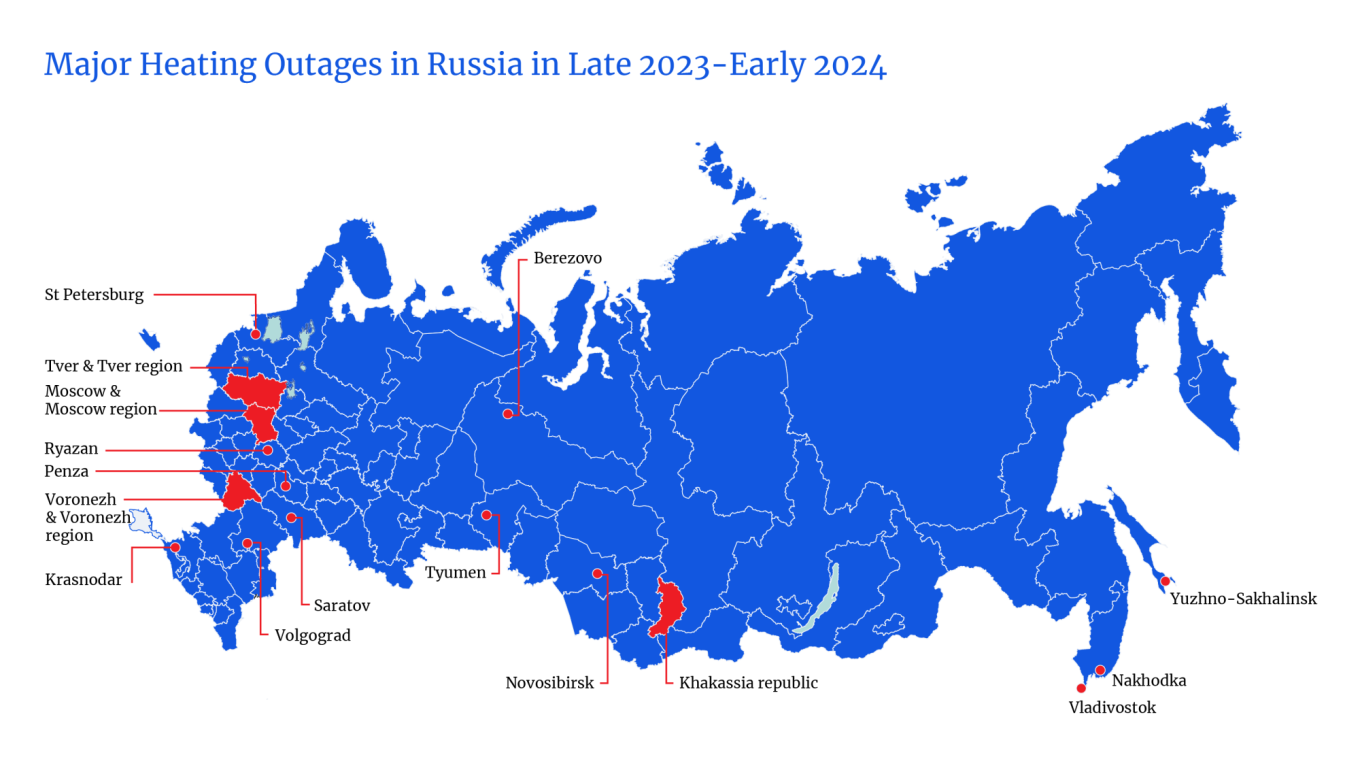
The Moscow region, where temperatures have plunged to as low as minus 20 degrees Celsius in the past week, as well as the Far East Primorye region , the cities of Moscow and St. Petersburg , Penza , the southern Voronezh and Volgograd regions and others, have all been affected by heating outages this winter.
In the Tver region, a group of residents filmed an appeal to President Vladimir Putin, saying that they “are freezing from the cold” in the village of Novozavidovsky.
“We're literally being killed by the cold,” a woman in the video said, adding that they have been sending requests to local authorities since September after their houses were connected to a boiler room whose power was reportedly insufficient.
“This is some kind of torture and extermination of the population 100 kilometers from Moscow,” she added.
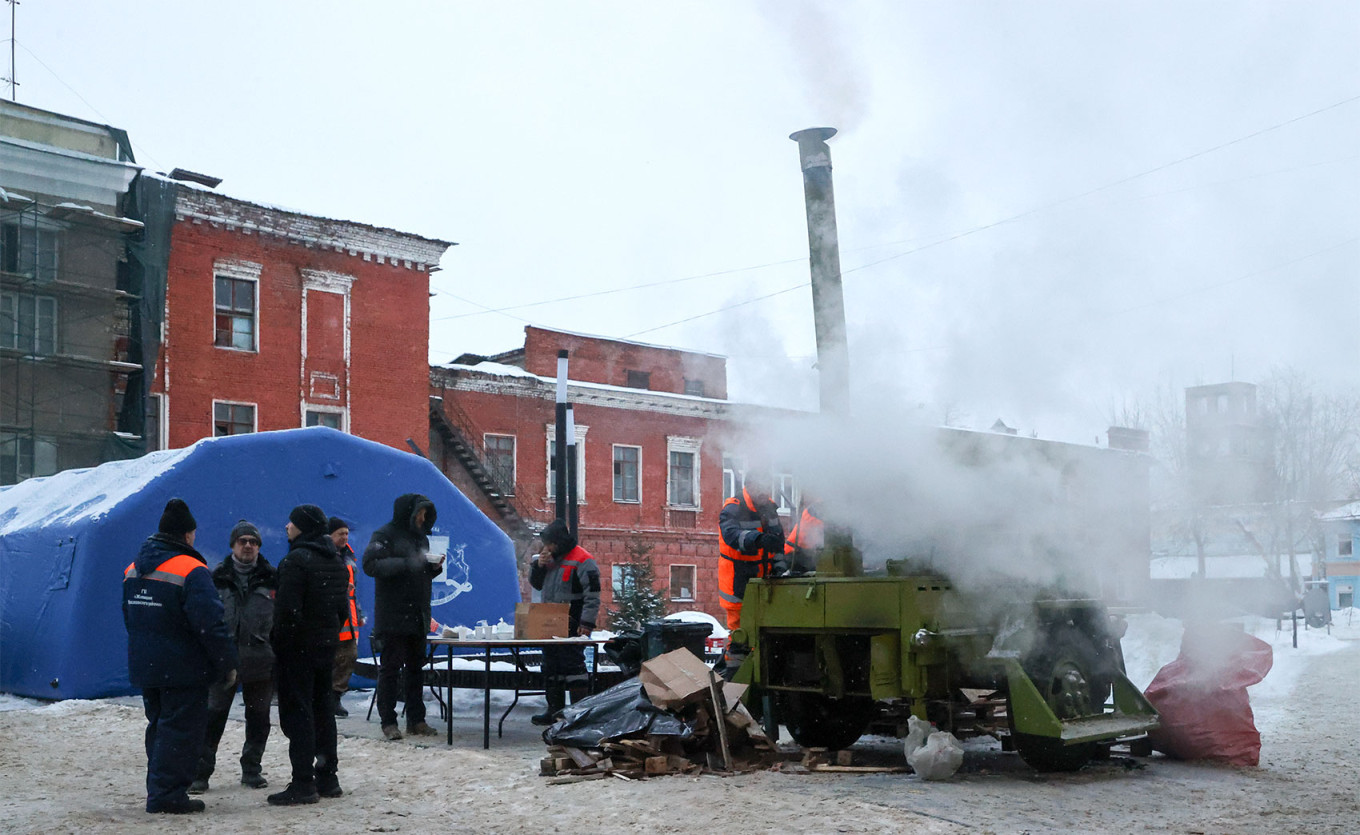
Residents of the Moscow region town of Elektrostal lit a fire in the street to draw the authorities’ attention to the heating problem.
“It’s impossible to stay in our houses. We're freezing!” a group of women in the video said.
Suffering from subzero temperatures, residents are placing the blame on local authorities and utility services for failing to take necessary precautions and not taking action to resolve the situation.
“We are sending complaints everywhere but no one listens to us. We have portable heaters working in every room, but the temperature inside is still 10 degrees Celsius,” Yelena from Podolsk said.
“There is a clinic and a hospital, as well as kindergartens, where there is no heating. And we have no answers, no assistance, no explanation,” Yelena added.
Placing the blame
Podolsk authorities opened temporary heating centers and declared a state of emergency.
Local authorities linked the heating problems to the fact that the town is heated by a boiler plant owned by the Klimovsk Specialized Ammunition Plant, a private ammunition factory and one of the largest weapon cartridge production enterprises in the country.
“The facility is under tight security conditions, which limits our ability to oversee winter preparations,” the Moscow region’s Vice Governor Yevgeny Khromushin said last week. “We were unaware of the problem for nearly a day.”
An unidentified Moscow region official and two senior executives at the plant were arrested on suspicion of providing unsafe services, Russia’s Investigative Committee, which probes major crimes, said Tuesday.
Investigators said that Podolsk’s deputy mayor was accused of misusing authority by issuing a readiness certificate for the boiler house at the plant.
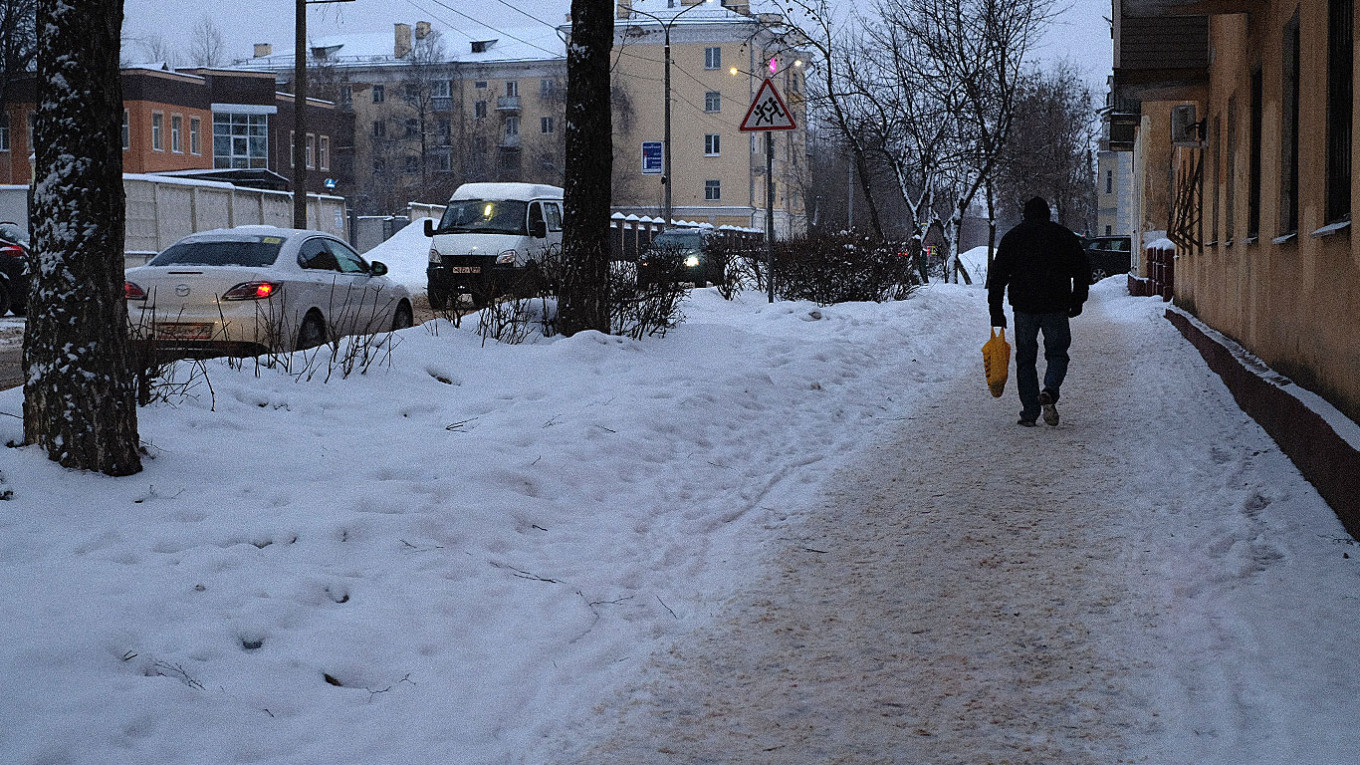
In the neighboring Tver region, authorities opened a criminal case over the laundering of over 84 million rubles ($938,993) in residents' heating bills, the Astra Telegram channel reported this week, citing unidentified sources. Investigators claim the heads of the local water intake and boiler house misappropriated the payments for personal use.
Reacting to the heating failures, Putin on Tuesday asked Emergency Situations Minister Alexander Kurenkov to provide heat and electricity to the affected residents.
The outages appear to be the latest effect of several decades of crumbling infrastructure, which has been linked to endemic corruption and mismanagement.
The overall decay of Russia's municipal infrastructure surpassed 70% in 2022, the pro-Kremlin newspaper Izvestia reported .
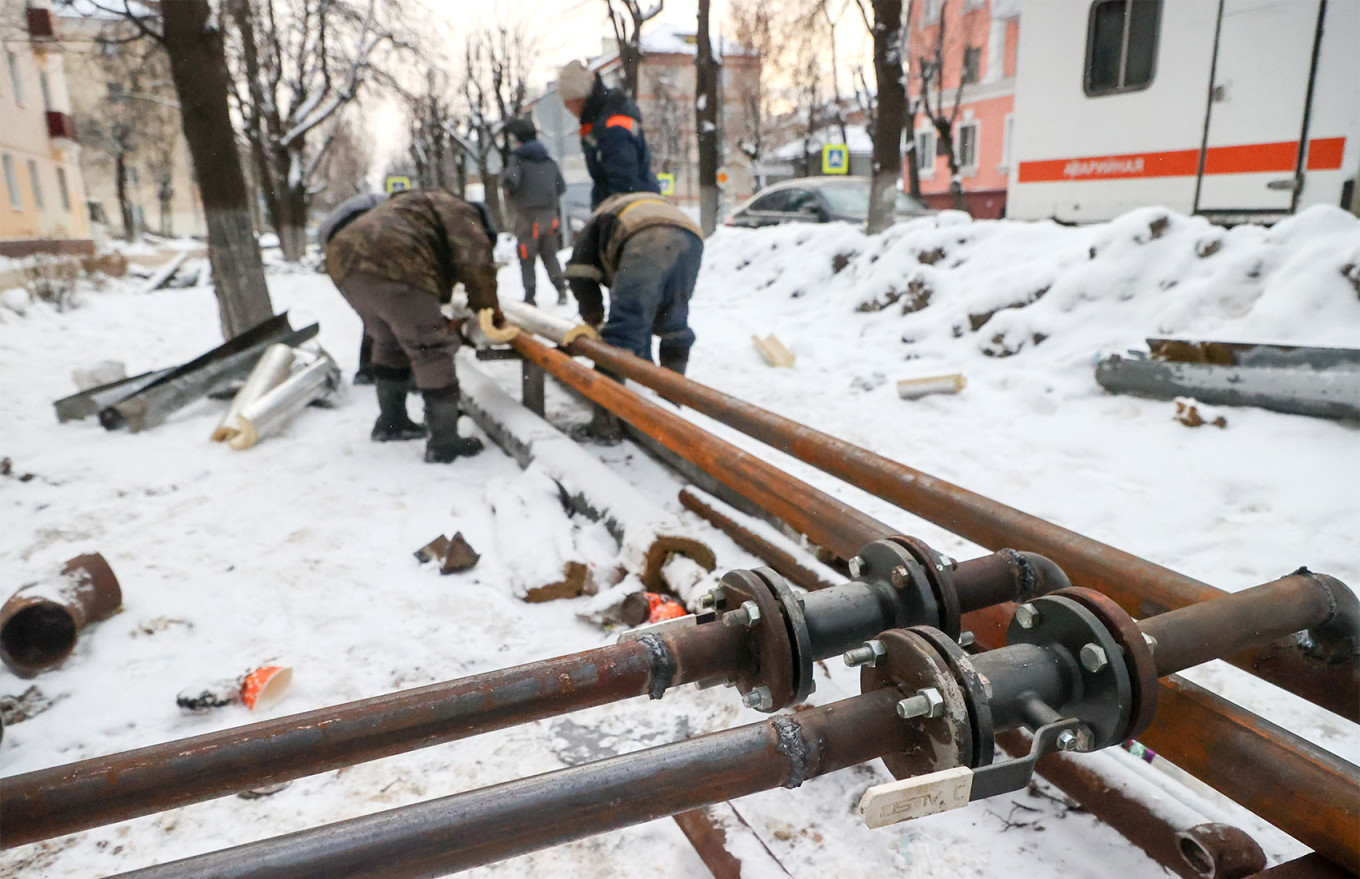
According to Sergei Pakhomov, head of the State Duma’s Construction, Housing and Utilities Committee, water pipes that were 90 years old or even older were still in use as recently as two years ago in some cases.
Housing, utilities and communal services are a common source of problems for Russians during the winter.
In St. Petersburg, extensive ice coverage on city streets and sidewalks is a chronic source of complaints , with many people ending up in the hospital over the years due to slipping and falling accidents.
In the Siberian republic of Khakassia, two villages were left without electricity last month due to apparent issues with outdated infrastructure.
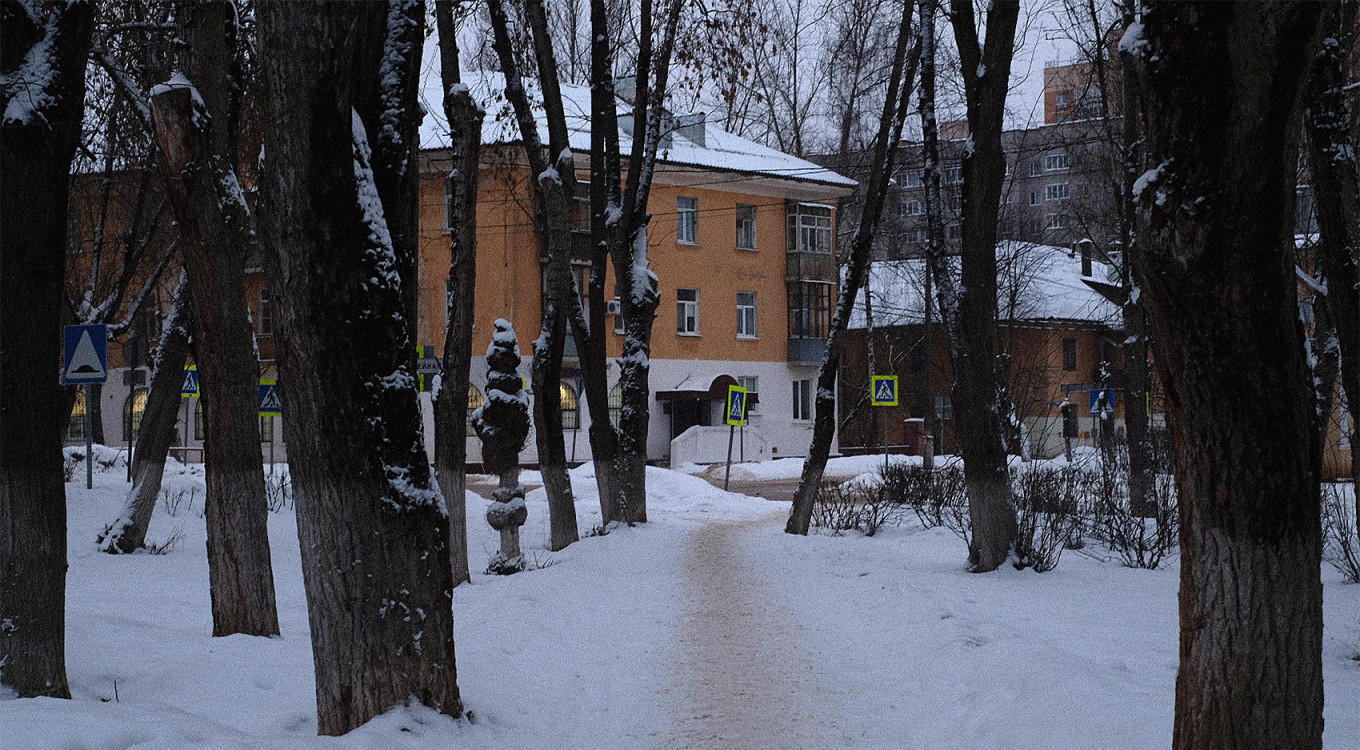
In the winter of 2020, five people in the Perm region were killed after a pipe burst.
When asked about the latest heating outages, Kremlin spokesman Dmitry Peskov acknowledged the problems and linked them to poor municipal infrastructure, saying that people “had to endure a lot of inconvenience in the cold and without electricity.”
"Despite all the titanic efforts to update all housing and communal services systems, there's still a certain part that remains considerably deteriorated. These programs will continue, but it is impossible to update all pipes and all housing and communal services systems in 10-15 years,” Peskov said.
As for now, those affected by heating issues appear to lack optimism that the problems will be solved efficiently.
"It's been a week since we've had heating, and the temperature in my apartment is around 11 degrees Celsius,” Podolsk resident Lidiya told The Moscow Times.
“Unfortunately, no one knows when it will be repaired,” she said.
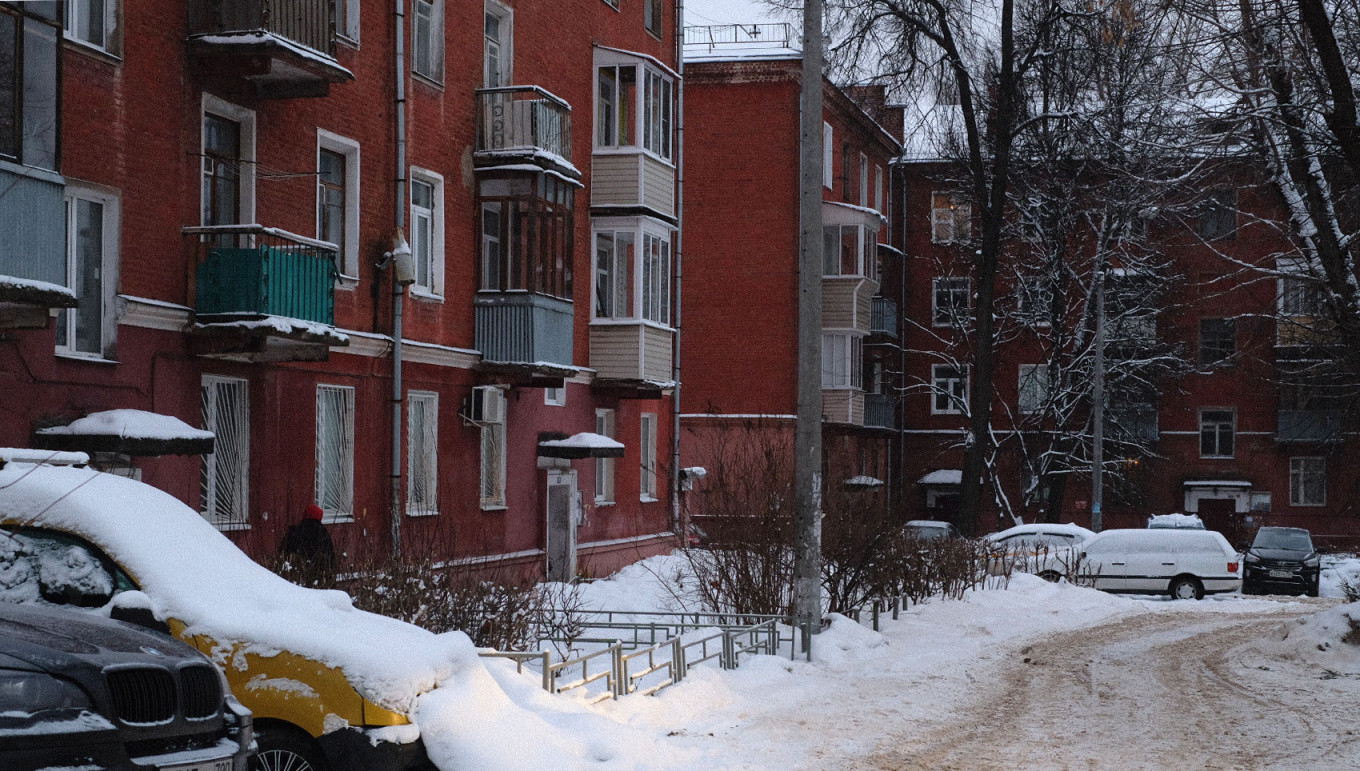
… we have a small favor to ask.
As you may have heard, The Moscow Times, an independent news source for over 30 years, has been unjustly branded as a "foreign agent" by the Russian government. This blatant attempt to silence our voice is a direct assault on the integrity of journalism and the values we hold dear.
We, the journalists of The Moscow Times, refuse to be silenced. Our commitment to providing accurate and unbiased reporting on Russia remains unshaken. But we need your help to continue our critical mission.
Your support, no matter how small, makes a world of difference. If you can, please support us monthly starting from just 2. It's quick to set up, and you can be confident that you're making a significant impact every month by supporting open, independent journalism. Thank you.
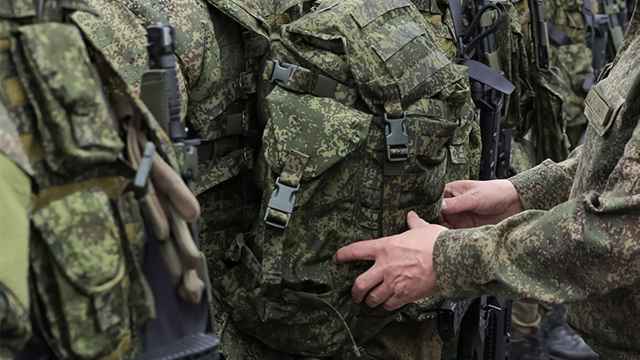
Russian Man Who Faked Death to Avoid Ukraine War Handed 5-Year Sentence
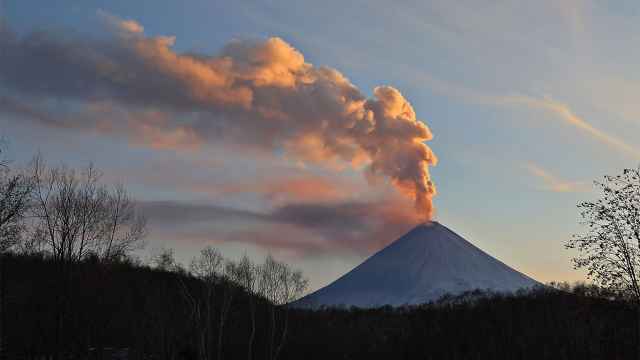
Volcano in Russia's Far East Spews Huge Ash Plume Into Atmosphere
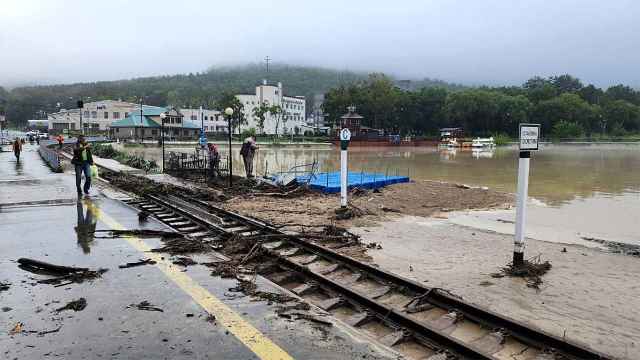
Flash Floods Submerge Homes, Roads in Far East Russia
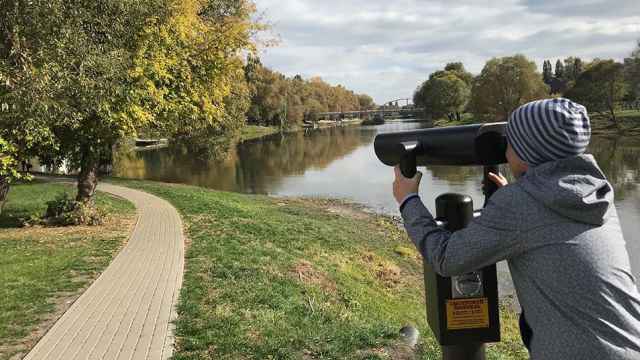
Can Urban Renewal Plug Russia’s Brain Drain?

IMAGES
COMMENTS
field trip report at water treatment plant. The Government of Rwanda is making steady progress in improving access to safe water and sanitation services. Initiatives to improve health, through the promotion of hand washing with soap, use of ECOSAN at schools as onsite sanitation and extending water supply in order to decrease prevalence and ...
Field Trip Ames Water Treatment Plant Meet at the main entrance of the Ames Water Treatment Plant at half past the hour of your regularly scheduled lab period. There is additional parking behind the building. Based on your visit to the plant, write a report (about 1 to 1 ½ pages) on the operation of the facility.
Water Treatment Plant Visit Report - Free download as Word Doc (.doc / .docx), PDF File (.pdf), Text File (.txt) or read online for free. nn
Water Treatment Plant (Grades 6-12) Subject: Various, including Science, Biology, Chemistry, Physics, and Health. Topic: Touring the community's water treatment plant. Time Frame: Most water treatment plants offer guided tours and will offer a definitive time frame. You can expect to spend a half-day touring the water treatment facilities and ...
The document summarizes a field trip report on water supply and sanitation in Rwanda. Specifically, it describes visits to: 1) GS Kotana school which uses ECOSAN (ecological sanitation) latrines that separate urine and feces to later be used as compost fertilizer. 2) The Kadahokwa water treatment plant which treats water from the Kadahokwa River in several steps before supplying it to the town ...
flumes etc.) and environmental regulations. At the end of the field trip students should be able to: •!Identify water quality parameters •!Identify unit operations in water treatment •!Identify the nature of the operation (physical, chemical etc.) Location: A Virtual Plant of Your Choice from any country Water Treatment: The purpose of a ...
Grades: 9-12 (Science, Chemistry and Biology) Time: For a guest speaker, 60 minutes; for a visit to the local drinking water treatment facility, two hours Space Requirement: For guest speaker, any classroom Methodology: Group Discussion, Experiential Learning Objectives: Students will gain a better understanding of the process used to treat the drinking water for their community.
Hyperion Water Treatment Plant Field Trip. This past week, our iLEAD learners took a tour of the Hyperion Water Reclamation Plant. It is Los Angeles' oldest and largest wastewater treatment facility. Our learners engaged in multiple hands-on exhibits, watched an inspiring mini documentary, and put on their hard hats to investigate the plant ...
NWC WATER TREATMENT FIELD TRIP REPORT - Free download as Word Doc (.doc / .docx), PDF File (.pdf), Text File (.txt) or read online for free. Water Treatment procedure carried out by the Mona Treatment plant
Summary. Join EarthEcho and the South Cross Bayou Advanced Water Reclamation Facility as we learn about wastewater treatment and resource recovery in Florida's most densely populated county, Pinellas. Explore the science behind wastewater treatment including how debris, nutrients, and bacteria are removed from the used water that leaves ...
It was a brilliant day!" The WaterWorks Center for Environmental Education is the nation's only water treatment plant reopened as an environmental learning center for kids. Water from nearby Flint Creek is still pumped through the facility. Children get to see firsthand where their water comes from and how it can be treated.
A Report On "Water treatment plant visit" Organized by: Civil Engineering Department Co-ordinator: Prof. H.M.BHIMAJIANI Date: 7th FEBRUARY 2015 Time: 9:30 a.m. to 01:30 p.m. Venue: Water treatment plant, Jetpur CONTENT 1. Acknowledgement 3 2. Information 4 3. Purpose of Visit 5 4. What we learn? 6 5.
Expeditions Virtual Field Trip: Diving Into the World of Coral Restoration. Join EarthEcho and Pinellas County Utilities as we learn more about wastewater treatment in Florida. Explore the ins and outs of wastewater management including how debris chemicals, nutrients, and bacteria are removed from water and more! - -.
For this field trip I went to the wastewater treatment plant in Durham. At the Durham wastewater treatment plant, they treat all the water from Durham and purify the wastewater. First, I saw the main pump station. It supplies 6 million gallons of waste water a day. The flow peaks in late August and early September.
Unformatted text preview: CE 326 Principles of Environmental Engineering Field Trip - Ames Water Treatment Plant Meet at the main entrance of the Ames Water Treatment Plant at half past the hour of your regularly scheduled lab period. There is additional parking behind the building. Based on your visit to the plant, write a report (about 1 to 1 1/2 pages) on the operation of the facility (due ...
In this course, two field trips were arranged: one in a local water treatment plant after finishing the topic water treatment and drinking water standards and the other in a local wastewater ...
We offer free educational field trips for school groups interested in learning more about the water renewal process. Tours can vary from 30 minutes to three hours depending on the tour type. Typical school group tours are 1 hour and 30 minutes. The fieldtrip includes a presentation/video and walking tour of the plant.
Learn about the value of water with a 30-45 minute walking tour at one of our two water treatment plants in Edmonton: Rossdale or E.L. Smith. By touring our site-specific infrastructure and processes, you'll learn about the journey water takes before it gets to your home. For more information, email us at [email protected]. Request a tour.
Touring the Aspinwall Water Treatment Plant is a unique experience for a school field trip, a research project, or an educational outing. ... Those touring the Water Treatment Plant must wear sturdy, close-toed shoes; ... 412-255-2423 Report an Emergency Press 1 Customer Service Press 5. Send us a Message. 1200 Penn Avenue Pittsburgh, PA 15222 ...
Source: Getty Images/Fotobank. Follow Russia Beyond on Twitter. Water pollution in Russia, according to Greenpeace, continues to be widespread. Recently, however, companies offering new customized ...
According to Sergei Pakhomov, head of the State Duma's Construction, Housing and Utilities Committee, water pipes that were 90 years old or even older were still in use as recently as two years ...
Mil Moscow Helicopter Plant is a Soviet, and later a Russian designer and producer of helicopters headquartered in Tomilino. It is a subsidiary of Russian He...
In 1954, Elemash began to produce fuel assemblies, including for the first nuclear power plant in the world, located in Obninsk. In 1959, the facility produced the fuel for the Soviet Union's first icebreaker. Its fuel assembly production became serial in 1965 and automated in 1982. 1. Today, Elemash is one of the largest TVEL nuclear fuel ...